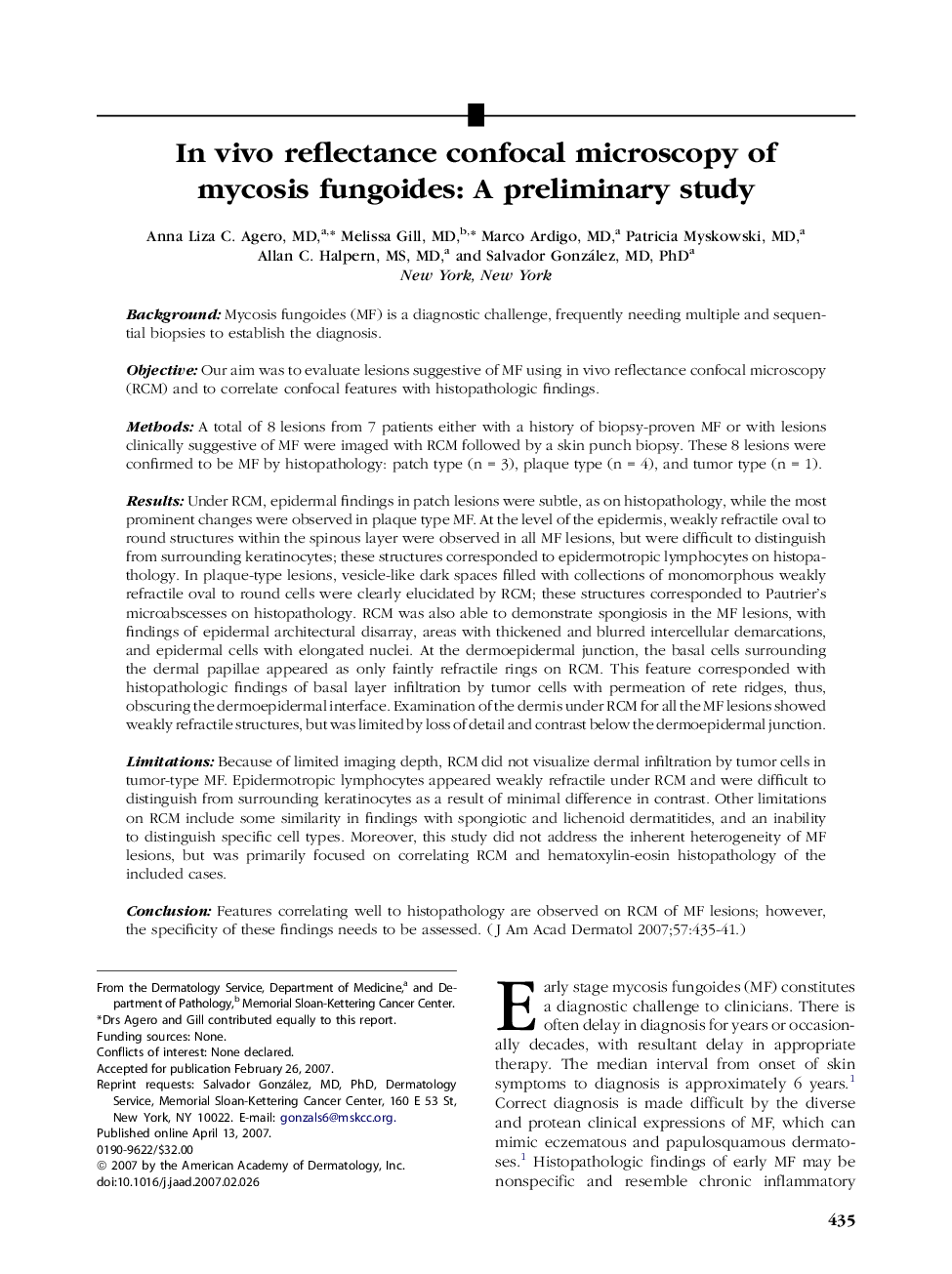| کد مقاله | کد نشریه | سال انتشار | مقاله انگلیسی | نسخه تمام متن |
|---|---|---|---|---|
| 3210779 | 1587638 | 2007 | 7 صفحه PDF | دانلود رایگان |

BackgroundMycosis fungoides (MF) is a diagnostic challenge, frequently needing multiple and sequential biopsies to establish the diagnosis.ObjectiveOur aim was to evaluate lesions suggestive of MF using in vivo reflectance confocal microscopy (RCM) and to correlate confocal features with histopathologic findings.MethodsA total of 8 lesions from 7 patients either with a history of biopsy-proven MF or with lesions clinically suggestive of MF were imaged with RCM followed by a skin punch biopsy. These 8 lesions were confirmed to be MF by histopathology: patch type (n = 3), plaque type (n = 4), and tumor type (n = 1).ResultsUnder RCM, epidermal findings in patch lesions were subtle, as on histopathology, while the most prominent changes were observed in plaque type MF. At the level of the epidermis, weakly refractile oval to round structures within the spinous layer were observed in all MF lesions, but were difficult to distinguish from surrounding keratinocytes; these structures corresponded to epidermotropic lymphocytes on histopathology. In plaque-type lesions, vesicle-like dark spaces filled with collections of monomorphous weakly refractile oval to round cells were clearly elucidated by RCM; these structures corresponded to Pautrier's microabscesses on histopathology. RCM was also able to demonstrate spongiosis in the MF lesions, with findings of epidermal architectural disarray, areas with thickened and blurred intercellular demarcations, and epidermal cells with elongated nuclei. At the dermoepidermal junction, the basal cells surrounding the dermal papillae appeared as only faintly refractile rings on RCM. This feature corresponded with histopathologic findings of basal layer infiltration by tumor cells with permeation of rete ridges, thus, obscuring the dermoepidermal interface. Examination of the dermis under RCM for all the MF lesions showed weakly refractile structures, but was limited by loss of detail and contrast below the dermoepidermal junction.LimitationsBecause of limited imaging depth, RCM did not visualize dermal infiltration by tumor cells in tumor-type MF. Epidermotropic lymphocytes appeared weakly refractile under RCM and were difficult to distinguish from surrounding keratinocytes as a result of minimal difference in contrast. Other limitations on RCM include some similarity in findings with spongiotic and lichenoid dermatitides, and an inability to distinguish specific cell types. Moreover, this study did not address the inherent heterogeneity of MF lesions, but was primarily focused on correlating RCM and hematoxylin-eosin histopathology of the included cases.ConclusionFeatures correlating well to histopathology are observed on RCM of MF lesions; however, the specificity of these findings needs to be assessed.
Journal: Journal of the American Academy of Dermatology - Volume 57, Issue 3, September 2007, Pages 435–441